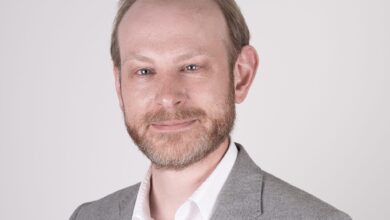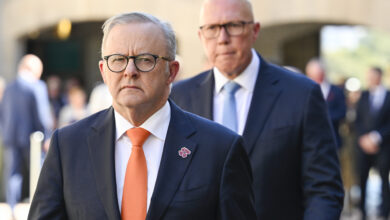Baby boomers to face aged care crisis
Bernard Salt warns of impending baby boomer tsunami.
Australia is about to be hit by a tsunami of ageing and demanding baby boomers at the same time as residential facilities are declining to provide more beds due to low government subsidies, experts have said.
Leading demographer Bernard Salt believes the health system will have to cope with an additional two million retirees in the coming decades and this will place a huge burden on government budgets.
There are currently 4.5 million baby boomers born between 1946 and 1964. That’s 20 per cent of the Australian population.
“Next year the oldest baby boomer turns 65 and over the next five years we’re going to start to see the people born in the late 1940s move into official retirement,” Salt told the National Press Club in Canberra.
“So you’ve got 4.5 million people ready to jump into the space now occupied by 2.5 million people.”
Salt’s warning came as the Government revealed the number of aged care places available in the 2009-10 ACAR round was under-subscribed.
Aged care providers applied this year to build just 5643 new beds - well short of the 8140 licences on offer.
The federal government on Wednesday announced almost 12,300 new aged care places worth $450 million a year.
They include 5643 residential places and 6629 community care packages to help the elderly stay in their own homes longer.
Catholic Health Australia says there’s a simple reason residential beds were under- subscribed.
CEO Martin Laverty says providers lose at least $13 a day on high care beds in capital costs alone.
“That’s why there’s been a lack of willingness of aged care operators to go even further into debt by building the residential aged care beds that we’re going to need for the future,” he said.
Laverty welcomed the increased number of community care packages. Labor initially planned to allocate only 4078 this year.
“To meet demand in the community I have made available a further 2551 community care places on top of more than 4000 that were originally advertised,” Ageing Minister Mark Butler said in a statement.
“These extra community care places have mainly been allocated to areas in states and territories where there has been an under-allocation of residential places.”
Aged Care Association Australia (ACAA) is alarmed at the decline in residential allocations in most states and territories.
CEO Rod Young said 10 years ago there were 11 applications per bed.
“But now those numbers are down to one to one or even less in some states,” he said.
“We’ve also got 33,000 places that have been approved over the last few years but are yet to be brought online and probably won’t be until the current system changes.”
Young said the government subsidy of $27 a day didn’t even cover the interest on the $200,000 cost of providing a bed.
Similarly, Aged and Community Services Australia (ACSA) said the release of the ACAR reinforced the pressing need for reform in aged care.
ACSA CEO Greg Mundy said the conversion of more than 2500 aged care beds into community care places indicated that unless urgent action is taken to improve the economics of residential care, the beds needed to meet the ageing population will not be built.
“Some 8140 beds were available in this round of allocations. The reality is 5643 bed licences. Only Victoria and South Australia took up the planned allocation,” Mundy said in a statement.
“The government must provide immediate and genuine assistance to ensure a viable industry to support and care for older people. This can be achieved by restoring the residential care subsidy of 1.75 per cent and extending it to community care. A short term top-up $10 increase in accommodation charges would also help to alleviate crushing financial pressures on providers.”
Email: [email protected]




